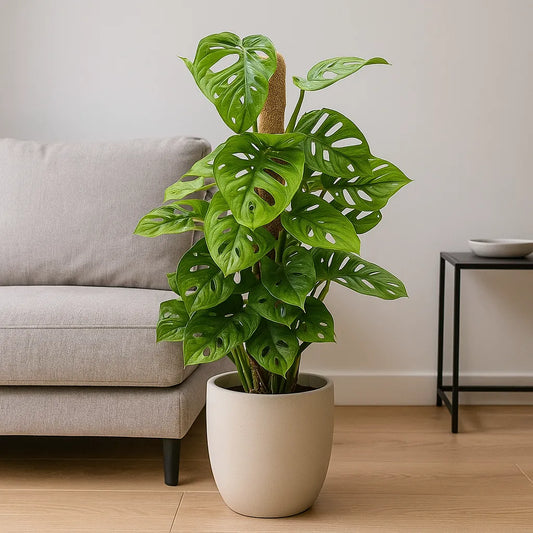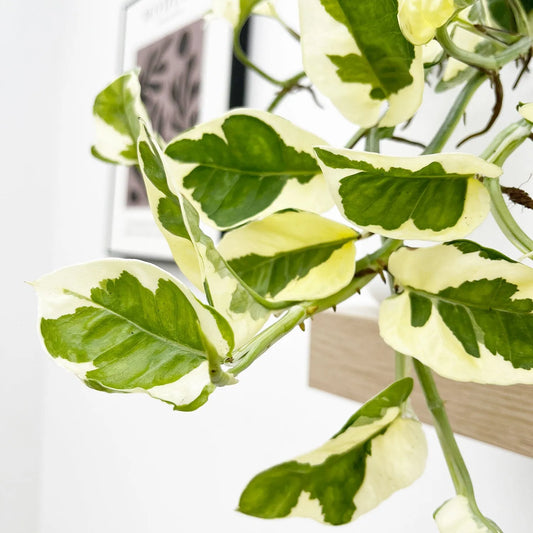Calathea leaves Curling: What Is The Problem?
Calathea can be a temperamental houseplant sometimes, but luckily it is one that will tell you when something is wrong with it. One of the main ways a Calathea will tell you that something is wrong is by curling the edges of its leaves. In this guide we will take you through why your plant does this and how to sort out the issues causing it.
Why do Calathea plants curl their leaves?
Calathea leaves are naturally bendy and expressive. At night they will close together to conserve energy and throughout the day they will bend to track the sun. Because of this you may quickly get used to seeing your Calathea leaves in a lot of different positions throughout the day.
The time you need to worry is when the outer edges begin to roll up on themselves. This is usually your plants first response to protecting its leaves since it can help preserve energy, keep moisture in and protect it from scorching.
Too Much Light
In the wild, Calathea plants grow under the canopies of larger trees so they have adapted to more dappled shade. When growing a Calathea indoors, you should make sure it has bright but indirect light and ensure that it is out of the way of direct light at midday. Too much direct light will scorch the leaves and cause the patterns to fade. This looks bad; it also stops the foliage from absorbing light and creating energy.
To avoid this, make sure your plant is in a location that is out of direct sunlight or that your window is covered by a blind that filters the light. The key is good ambient light, not direct light. Once you correct the lighting conditions for your Calathea you will find the leaves unfurl and recover within days, although you will need to remove any badly damaged leaves.
Temperature problems
You will get the best results from your Calathea when you match its natural environment as closely as possible. As a tropical houseplant, temperature is the most important of these to replicate. You should keep your Calathea between 19 and 29°C for the best results. Normal room temperatures should be fine for keeping your Calathea, but you should be aware of any cold draughts in your home and keep your plant away from them. Also be aware of opening windows too long in the winter.
Low humidity
Humidity is crucial for a healthy Calathea plant. Calathea absorb water through their leaves as well as through their roots so watering alone is not enough to give them all the moisture they need. If the leaf dries up the plants first defense mechanism is to curl up to try and retain moisture.
When this happens the leaf will also feel dry and brittle to the touch. The first thing you should do is mist the leaves with a spray bottle to rehydrate the foliage.
Misting is a short-term solution and should be done regularly to keep the leaves healthy and vibrant. For a longer-term solution you could place a humidifier near your plant or place it on a pebble tray. Another option is to move your plant into a more humid space like a bathroom or kitchen (just make sure the space meets the plants light and temperature requirements).
Incorrect watering
Calathea plants can be temperamental when it comes to how much water they need. Too little water will cause the plant to dry out, causing the leaves to curl up. Too much water will cause root rot which stops the plant being able to absorb nutrients which will cause the leaf to degrade, making them curl up.
Your ideal Calathea soil should be damp, but not wet and waterlogged. Check the water levels in your soil a few times a week by inserting a stick or a fingertip into the soil. You should only water your Calathea when the top few centimeters of the soil are dry. You should never allow your Calathea to dry out completely.
When you water your Calathea make sure you don’t overwater it so that water is pooling on the soil. To lessen the chances of too much water building up in the soil and causing root rot, make sure that your pot has the best drainage possible. You can do this by making sure that there are plenty of drainage holes in the bottom of the pot. When you do water a good indication that there is enough moisture in the soil is when it begins to seep out of the drainage holes.
In the winter months, your Calathea will enter a dormant stage and will reduce the amount of water it draws from the soil. During the winter, water your Calathea a lot less.
Water Quality
Calathea plants are susceptible to mineral and chemical buildup in their soil. This buildup usually happens when you water your plant with tap water. This is more common in hard water areas, and you may sometimes see a buildup of salt on top of the soil. The best way to avoid this happening is to only water your Calathea with filtered tap water or bottled water. Another thing to consider is the water temperature. Calathea plants prefer room temperature water instead of cold water as it isn’t as much of a shock to the roots.










